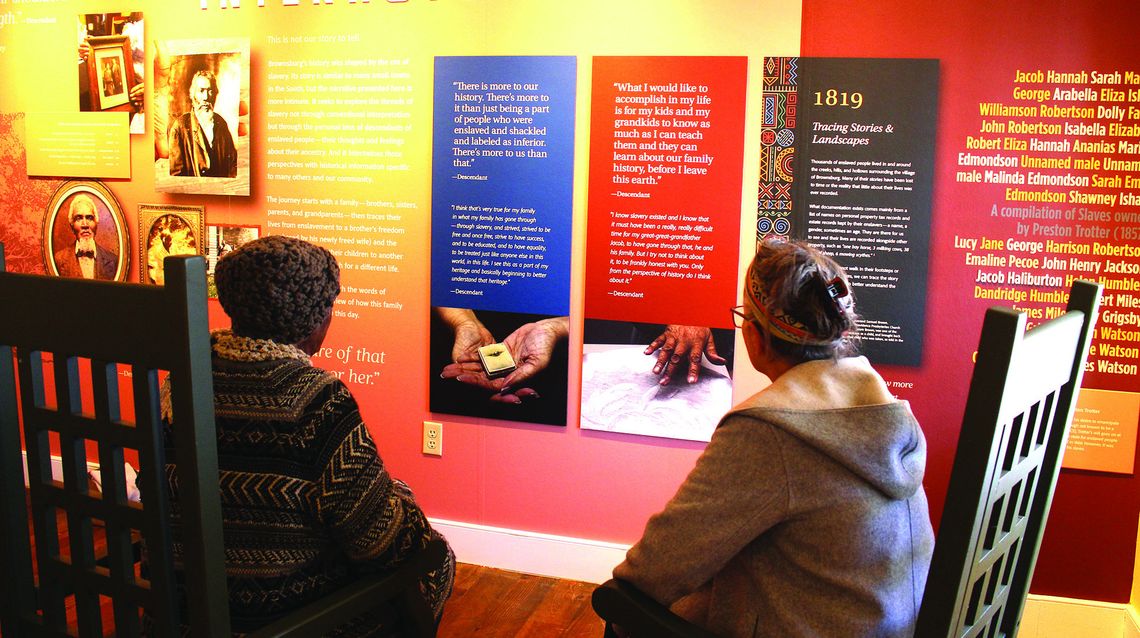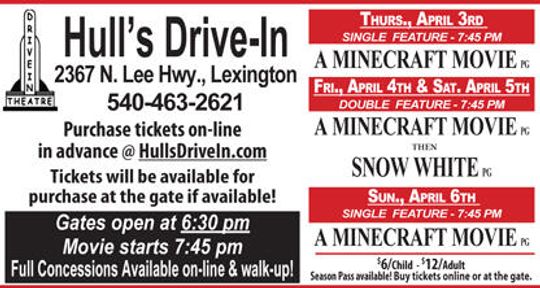New Brownsburg Exhibit Explores Slavery Through One Family’s Lens
“How will we know it is us without our past?” is one of the many quotes on the walls of the Brownsburg Museum’s newest exhibit, “Interwoven: Unearthed Stories of Slavery.”
The quote from John Steinbeck’s “The Grapes of Wrath” is displayed alongside many other quotes from descendants of an enslaved family from Brownsburg.
The exhibit, which opens this Saturday, is the most ambitious project undertaken in the nearly 15 years the museum has been open to the public. It explores slavery in and around the Brownsburg area by focusing on the arc of one family’s journey from enslavement to freedom for some family members on another continent. This intimate story starts in the present and then moves to the past to show how family lore and a passion for ancestry can preserve the details of slave life in 1860s Brownsburg.
“I wanted to pass this family history on to my children and grandchildren,” said Stan Land, a former Rockbridge resident and University of Virginia football player who now lives in Texas.
Land was one of the descendants who participated in the development of the exhibit. “It helps me to better understand and explore the challenges associated with the people that are part of my family and how they lived and how they survived,” he said.
The project came about through a unique multigenerational and regional collaboration of descendants, UVA graduate students, Rockbridge County High School students, and volunteers from Richmond, Lexington and Brownsburg.
David Green, associate professor of chemical engineering at the University of Virginia and a descendant of the Haliburton family who also participated in the early development of the exhibit , said, “I’ve known this history. I’m a history buff in general. My father and my mother are an unbroken line through generations about how that history is communicated. I don’t walk around it. It’s foundational to how Brownsburg was built.”
“It has been a desire for years to do an exhibit like this,” said Julie Fox, the Brownsburg Mu- seum Committee’s chair and exhibit organizer. “In the spring of 2022, we partnered with Historic Lexington Foundation to do a one-day event called ‘Still Standing,’ a tour of some of the area’s local slave dwellings. The tour was an enormous success and proved the public was interested in learning more about slavery in the area. This exhibit was a natural progression of that tour.”
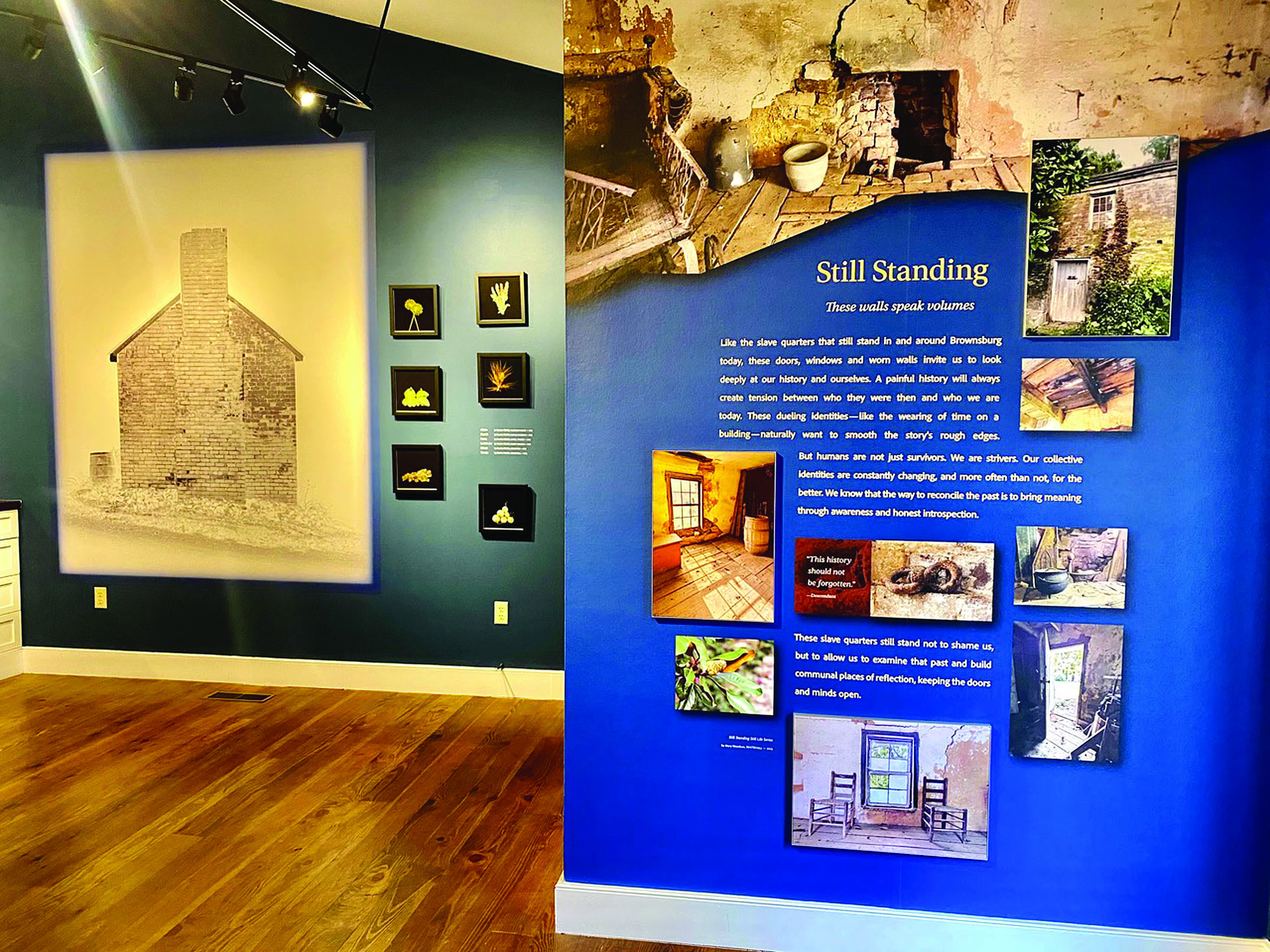
OTHER WALLS of the exhibit show photos of some of the Brownsburg area slave dwellings that are “still standing” taken by Mary Woodson and (in the background) the photographic work of New York artist Gesche Würfel, who visited the area last year.
She continued, “We talked for months about how to tell this story. Then, the pieces started coming together, beginning with the involvement of the UVA students. It was brilliant to see all these people come together, each with their own lens of the topic of slavery, and work together to weave a profound and powerful exhibit.”
Because of all the moving parts and ideas coming in from many directions, it took nearly 13 months to glean the information down to a single narrative and develop the exhibit from start to finish, including the installation on the walls of the two-room museum.
“We’re a small museum,” said Brownsburg resident Dee Papit, who developed and wrote the exhibit text. “So, we decided to make the narrative intimate, like our space, and tell the story through the words of the descendants of the Haliburton family and combine that with the history and artifacts we collected. What is really fascinating is that it’s all about Brownsburg and the surrounding area. It’s truly a local story.”
A deciding factor was the wealth of information provided about this family. A notable aspect of this particular enslaved family was that some members could read and write, a rare characteristic for the period. Between a well-documented family tree, public records from that period, a very special letter, and the involvement of the descendants, the story gave the exhibit researchers and developers much to work with to create a compelling narrative.
One key element of the story was the involvement of younger voices and perspectives.
“These students were very interested in telling this story. And they did not shy away from leaning into the subject and providing an honest and authentic voice to the exhibit,” said Papit. “They were fearless, and that mindset empowered us to be fearless, too.”
Also foundational to the exhibit was the interviewing of several Haliburton descendants. Their words formed the base of the content, and the arc of the historical part of the exhibit was developed around their perspectives and about the movement of their ancestors and what it meant to be a descendant of a slave.
“We worked the problem backward, like reverse engineering,” said Papit. “Instead of starting with a predetermined outline for the exhibit story, we let the narrative evolve alongside the many voices that were brought to the table. It was not always a straight line, and it took a while to get it there, but weaving these ideas together was an incredible experience. I think the result speaks for itself, or rather for all of us, and especially the voices of those no longer here.”
The project also involved county educators Valerie Clay and Coleen Cosgriff, who brought the RCHS dual enrollment honor students to Brownsburg to tour several slave dwellings and gain more insight about slavery in the area.
“My students felt a special connection to the project because they were researching actual events that occurred in their community,” said Clay. “For me personally, it was an honor to be a part of the exhibit, not only as a history teacher, but as a citizen of Rockbridge County.”
“It is important for the students to get outside the classroom and be in the environment they are learning about in person,” added Cosgriff. “Some things cannot be replicated in the classroom, so being onsite enriches the learning experience. We often look for grants to fund these kinds of trips to secure opportunities for greater learning. This exhibit and learning more about slavery in Brownsburg was one of those opportunities.”
“All of the students brought good ideas to the table many of which we folded into the exhibit, but mainly what they brought was a genuine interest in this topic and an enthusiasm to dive into the story with honesty and truthfulness. Their energy was infectious,” said Fox.
Brian Thomson of BLT Design joined the team from Richmond. Thomson and Papit have worked professionally as strategy and design consultants for over a decade, and both volunteered their expertise to help develop the exhibit.
“I’ve always loved history and the three-dimensional storytelling one experiences in a history museum. This was a wonderful opportunity to see if I, too, could create an engaging space like so many others I’ve enjoyed,” said Thomson.
About the collaboration, Thomson said, “I grew to appreciate and value the energy of everyone involved. The mindfulness and quality of conversation we all are attempting to share. Equally important was the respect for sharing a local story, with a complicated context, in an honest way with everyone. The challenge was how to organize the threads so that wherever the visitor begins, they have something to draw them into the conversation.”
“The exhibit’s design is innovative in its use of bold colors and graphic representation to tell the story,” said Papit. “The visual storytelling that covers the walls weaves the narrative and historical documents together in a dynamic yet profoundly moving way.”
Other key collaborators included Larry Spurgeon, president of Rockbridge Historical Society, who provided research, interpretation and historical documentation for the exhibit. Brownsburg residents and museum board members Melanie Pyne and Coleen Cosgriff managed the artifacts and helped with research. And, graphic designer Mary Woodson of Fairfield provided additional exhibit photography and design production.
One of the most unique aspects of this exhibit is the evocative black-and-white photographic art of internationally known New York photographer and artist Gesche Würfel, whose work has been exhibited in England, Europe, Singapore and the United States.
“Gesche’s photos and her artistic interpretation of slave dwellings provide a powerful reflective moment for the visitor,” said Fox. “It’s rare to combine history and art like we have in the museum, but those photographs add a deeply emotional endpoint to the enslavement story and bring us back to where they stand today.”
Interwoven was made possible by generous support from the community and the state. The Friends of the Museum, along with other community supporters, donated the funds and artifacts to produce the exhibit. Grants from Washington and Lee and Virginia Humanities also helped fund the project.
“We appreciated the support and the funding and we will continue to raise funds to provide more opportunities for visitors, groups, and educational programs for those who want to learn about the area and the lives of enslaved people in Brownsburg,” said Fox.
The museum hours are Saturdays, 10 a.m. until 4 p.m., and Sundays, 1 to 4 p.m. (closed Easter Sunday). Admission is free. The museum is located in the center of the village at 2716 Brownsburg Turnpike. For more information, call (540) 348-1600, or visit www.thebrownsburgmuseum. org.
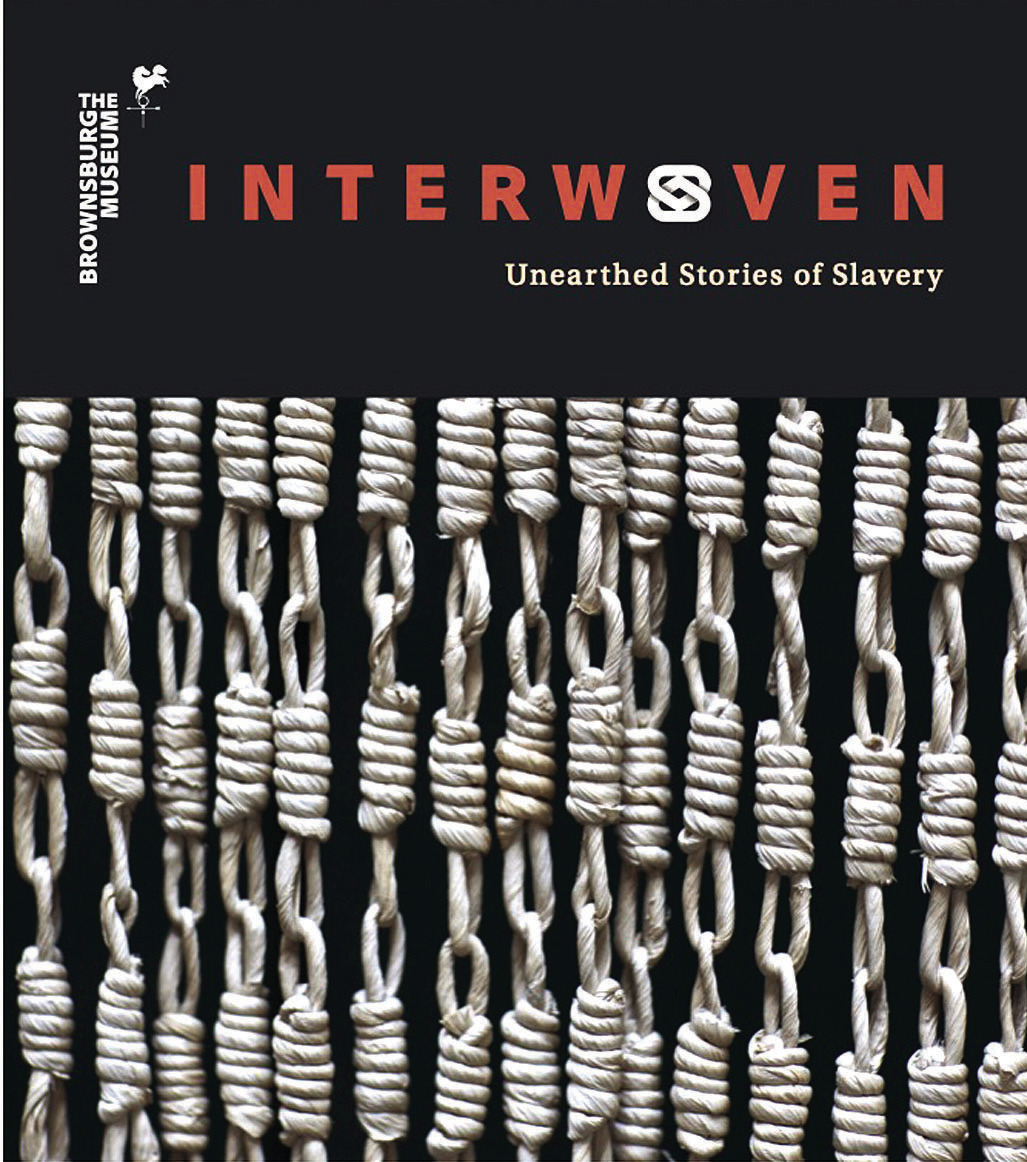
AN EXHIBIT catalog will soon be published to accompany the Brownsburg Museum’s newest exhibit.
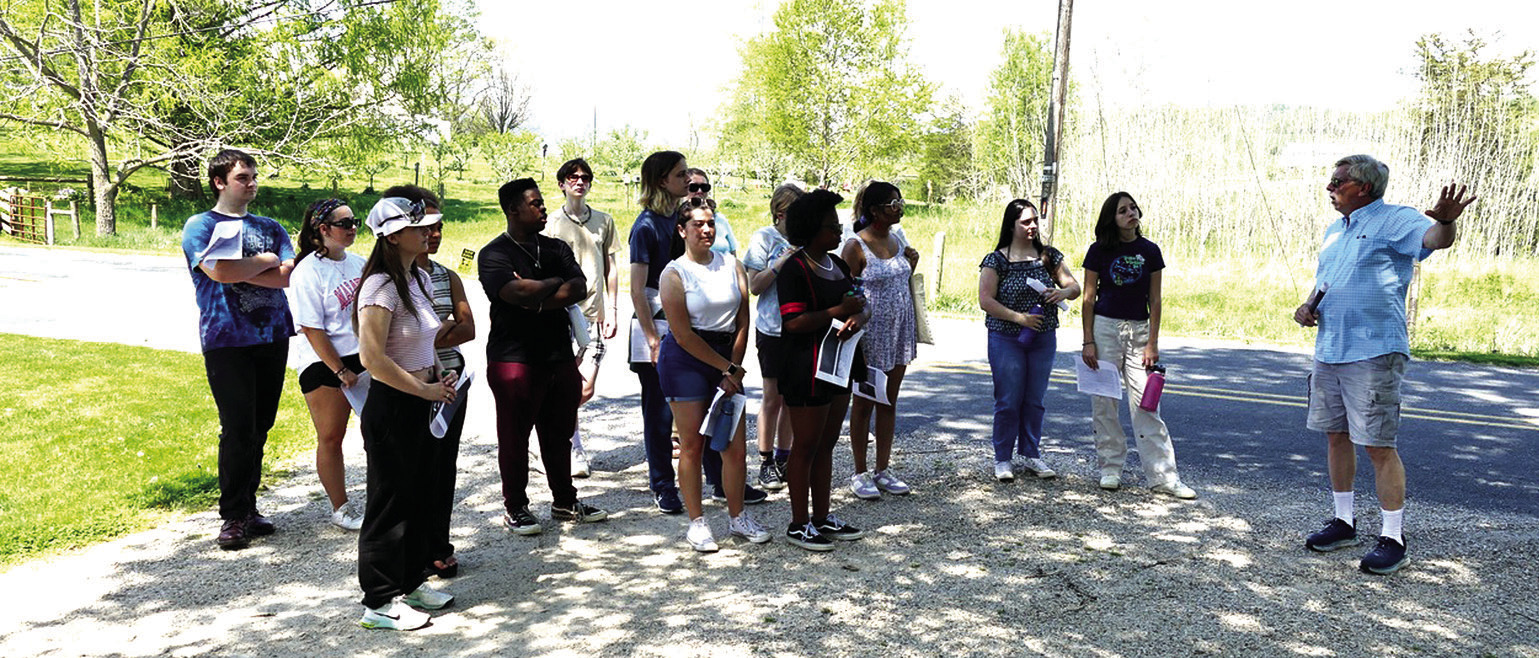
LAST SPRING, Rockbridge County High School dual enrollment honor students take a walking tour of some of Brownsburg’s slave dwellings, led by Larry Spurgeon, president of Rockbridge Historical Society. (Dee Papit photo)
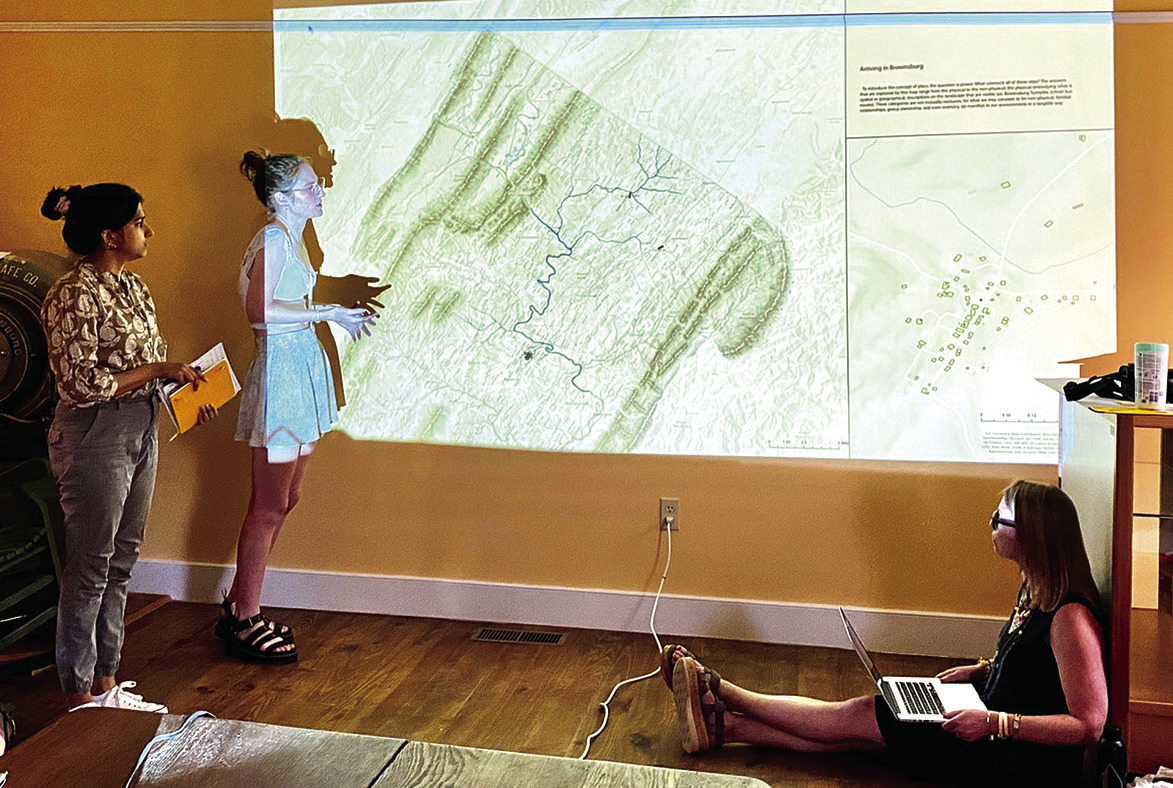
UNIVERSITY of Virginia graduate students present their ideas early on in the exhibit development last spring. (Dee Papit photo)

